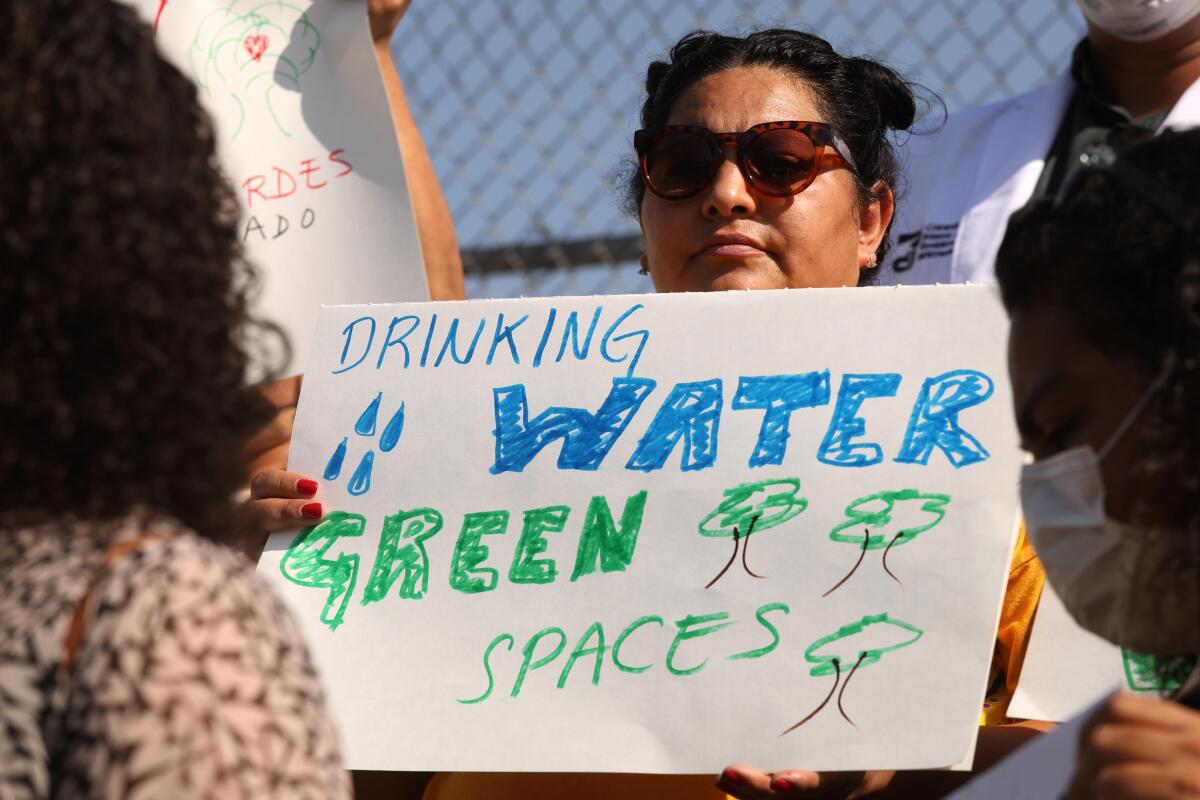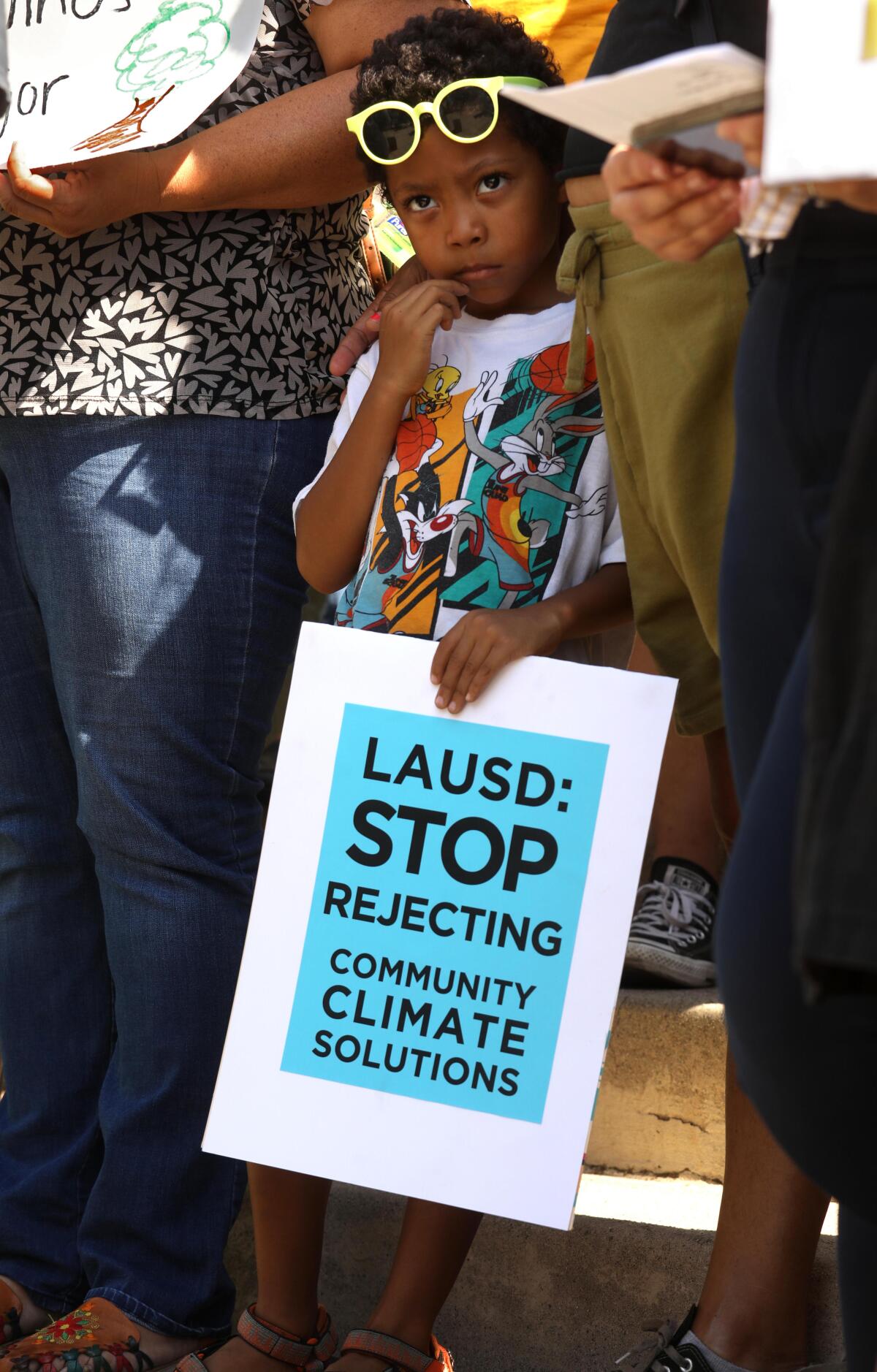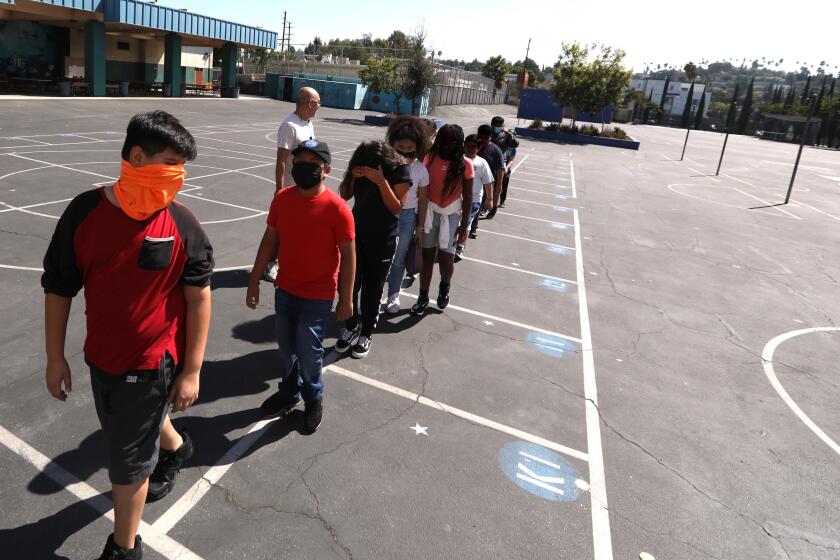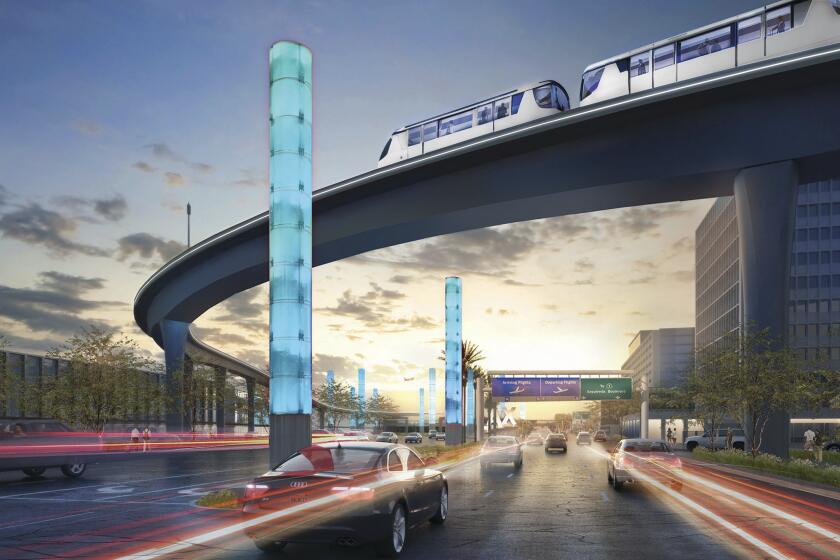Hot, angry parents continue to hammer LAUSD for shade and even cool water for kids

- Share via
At 95 degrees, it was too hot for children to go outside to play at Lorena Street Elementary School in Boyle Heights on Wednesday morning. So frustrated parents took their place instead, standing outside the schoolyard as part of their ongoing demands that L.A. Unified act more quickly to protect children from heat by creating more climate-friendly campuses.
Reclaim Our Schools Los Angeles — a coalition of organizations that includes United Teachers Los Angeles and represents parents and community members — said the teachers union’s Beyond Recovery bargaining platform, which includes green space demands, was presented to the district in May. UTLA is bargaining over its next full contract with the district.
Now, as the region faces the worst heat wave of the year, parents and environmental advocates are renewing their plea with a sense of urgency.
“LAUSD has a greening index that tells us this school is one with the highest need,” said executive director of the coalition, Arelia Valdivia, adding that just 5% of the Lorena campus offers green space. “On days like today, it makes the heat even worse. On days like today, [children] are kept inside because it’s too hot, or they’re left outside to deal with the heat.”
Reclaim Our Schools has called for improvements including: reducing pavement at 10 additional schools each year through 2040 beyond the district’s existing commitments, making all schools 50% green space, using electric-powered school buses and installing EV chargers at every school.

School playgrounds are often the hottest areas in a community because of the large swaths of asphalt and school design that makes for a hotter environment, experts say. Research has shown that heat and lack of green space can affect children’s attendance and educational performance.
Parents have also expressed concerns during this heat wave about a lack of cool, drinkable water at schools. Kids have told their parents the water from campus fountains is too hot or tastes metallic, and some teachers have relied on water bottle donations to keep students hydrated.
“This is an all-hands-on-deck effort,” the district said in response. “We appreciate the advocacy and partnership by community organizations and we encourage our local, state and federal elected officials to prioritize greening infrastructure investments in schools and our communities and develop climate change solutions for California.”
The LAUSD Board of Education has adopted resolutions to support climate literacy, greening and other sustainable efforts and pointed to its greening index and greening projects or funds, such as the $50 million allocated to replace bungalows with outdoor learning spaces, the district said.
In addition, the school bus fleet will be upgraded with 11 new electric buses equipped with Wi-Fi.
There are 150 L.A. Unified schools in “very high need” of green space and shade, mostly in South and East Los Angeles, where parks are scarce.
“It is nice that LAUSD is taking some first steps, but we are in a climate crisis and they are woefully behind in addressing it,” Valdivia said in response to the district’s statement. “They lack a comprehensive plan and have no excuse for fully rejecting the thoughtful plan we proposed.”
Valdivia said the school district has long ignored parents’ requests for immediate shade relief and put the burden of greening campuses on parents and schools. Parents said efforts to build at their children’s schools are often delayed by years or rejected.
Maura Howe, a member of Reclaim Our Schools, said that when her children were younger, parents were advocating for green space at one school in Palms and proposed a play yard remodel that included shade structures and trees.
“A decade passed before it was finally completed,” far too long for children to be suffering in the heat, she said. “As the saying goes, the best time to plant a tree is 20 years ago. The next best time is now.”
Parent advocate Aleigh Lewis of Angelenos for Green Schools said campuses in underserved neighborhoods need the most improvements because they are in community “heat islands” that are lacking in park space and shade.
“Green schoolyards not only mitigate heat and clean the air; they are also incredible sites for learning and creativity,” Lewis said. “Not to mention, they can even be more cost effective than asphalt. These are solutions that the district has known about, yet their response continues to be pave and repave. This is not a solution. This will only make the problem worse.”
More to Read
Sign up for Essential California
The most important California stories and recommendations in your inbox every morning.
You may occasionally receive promotional content from the Los Angeles Times.












